Bomarea propagation--aborted
I was thinking about trying to propagate a Bomarea when I repotted it. I decided not to, but since I have photos I thought some might find it interesting anyway.
This is Bomarea caldasii, bought at a monthly sale at the San Francisco Botanical garden. It's a strain that is grown at UC Botanical Garden in Berkeley and I believe there are a lot of photos of it online. I think it's gone by other names, and I don't know how to sort them out. This was $15 for a one gallon plant in bud and bloom.
Bomareas (and Alstroemerias, which I understand should probably be the same genus given the genetic data) have not been propagated from stem cuttings. Many/most Alstroemerias are easy to propagate by division. Bomareas, on the other hand are kind of tricky, and the ease of this may depend on the species. I'm not familiar with reports of people dividing B. caldasii. I haven't looked, either.
Here's the whole plant when I got it, a bit blurry:
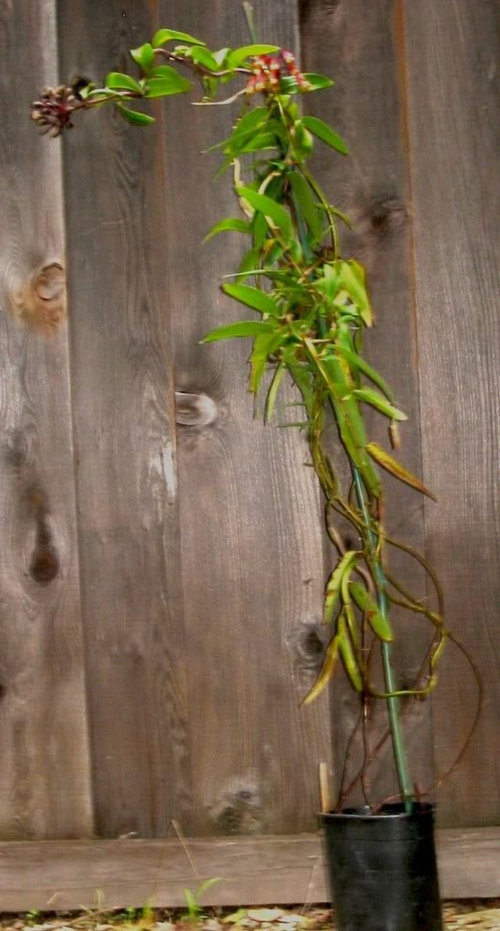
In addition to the shoot in bloom and another in bud it has a couple shoots that just emerged from the ground as well as two more mature ones that will presumably grow buds soon. You can see those in this picture (upper right and lower left):
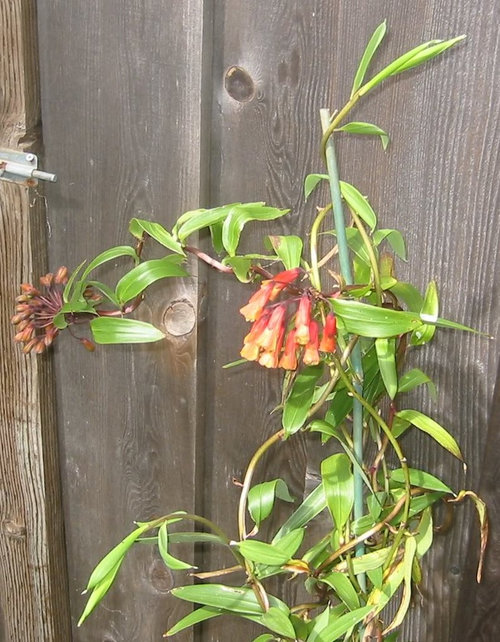
A closeup of the first flowers. The first flowers on Bomareas don't look great compared to later ones. You can see that there are relatively few flowers in the first inflorescence:
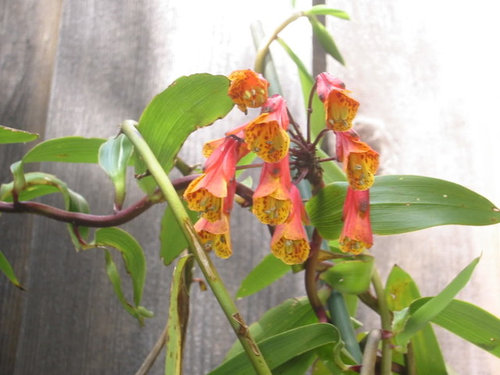
When I got the plant the pot was distorted because of all the roots and tubers. One region of tuber had poked out of a hole. A couple days ago I noticed a shoot:
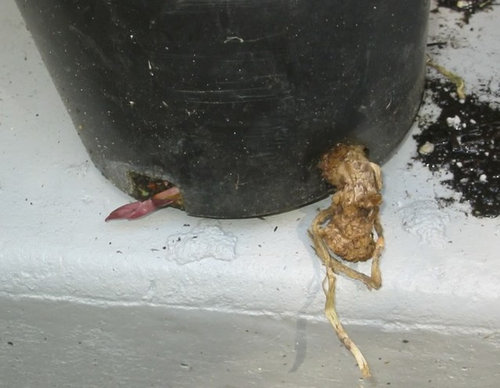
I was hoping maybe the shoot and the extruded tuber were connected and could just be removed together. It turned out to be more complicated than this.
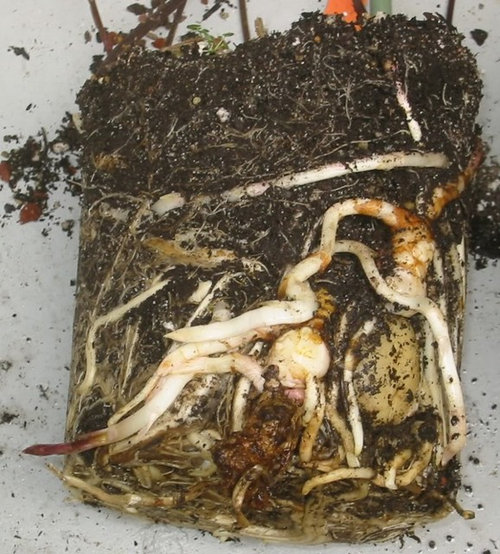
It might be hard to see, but the shoot that came out the hole is not actually connected to the extruded tuber. There's another shoot that is connected to a tuber at the surface (the middle going across the picture), however that same region of tuber is connected to a shoot that has emerged. So I left it.
I repotted the whole thing in a larger pot (about 3 gallons) and tried to disturb the roots/tubers as little as possible. In retrospect I probably should have used a larger pot.
Any thoughts on what others might have done would be appreciated.
For now I'm just going to propagate it from seed, I guess. The flowers possibly they need pollination, either by hummingbirds or manual self-pollination I think. They are followed by pods, each of which has roughly 40 seeds, if I remember correctly.






ken_adrian Adrian MI cold Z5
mark4321_gwOriginal Author
Related Professionals
Clemson Landscape Architects & Landscape Designers · Lyons Landscape Architects & Landscape Designers · Mitchellville Landscape Architects & Landscape Designers · Pelham Landscape Contractors · Coram Landscape Contractors · Damascus Landscape Contractors · Deerfield Landscape Contractors · Ellensburg Landscape Contractors · Fruit Heights Landscape Contractors · Golden Gate Landscape Contractors · Norristown Landscape Contractors · Rockwall Landscape Contractors · Wethersfield Landscape Contractors · Antioch Landscape Contractors · Hawaiian Gardens Landscape Contractorsmark4321_gwOriginal Author
peggiewho
mark4321_gwOriginal Author
peggiewho
peggiewho